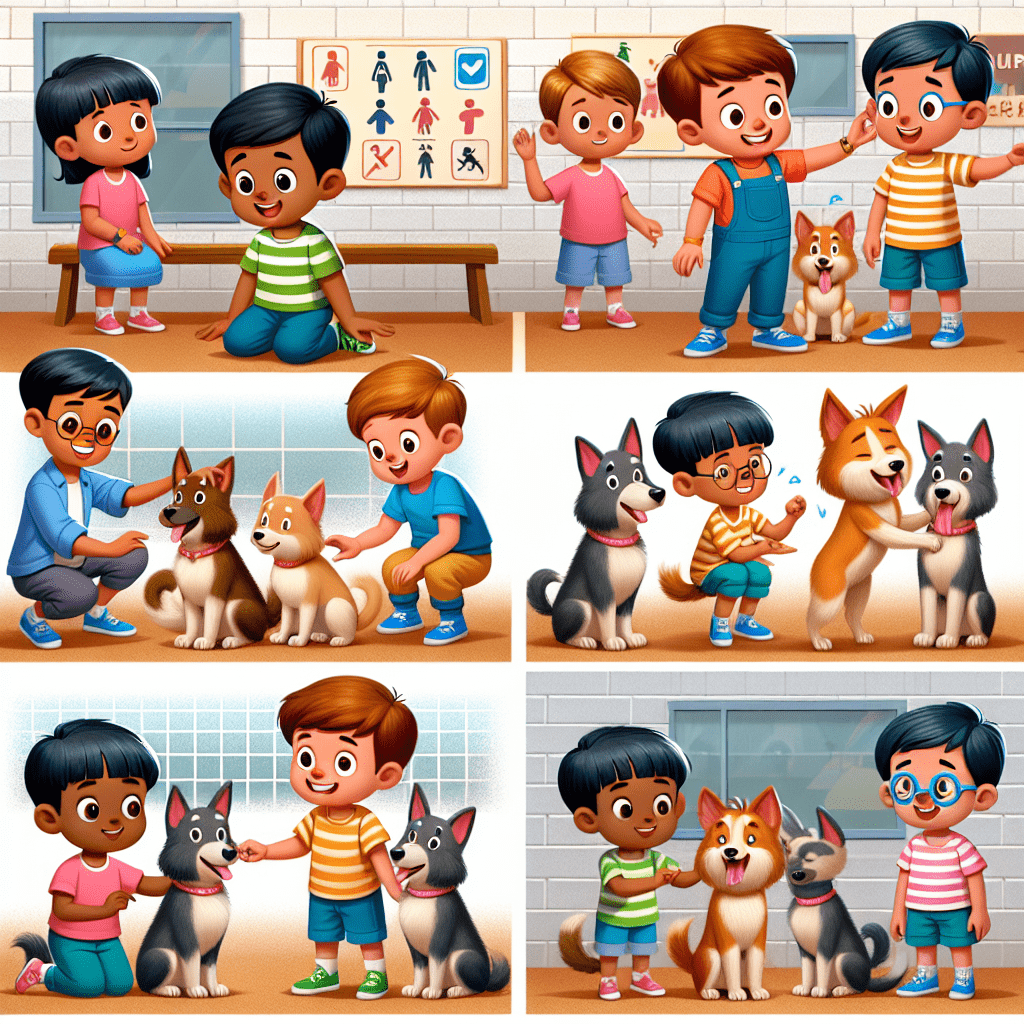

Pawsitive Play: A Parent’s Guide to Safe Dog-Kid Interactions
As a lifelong dog lover and seasoned trainer, I’ve witnessed firsthand the heartwarming bond that can thrive between kids and their furry friends. However, ensuring safe interactions is vital for creating a loving environment where happiness flourishes. In this guide, I will share insights and tips from my years of experience that empower parents to cultivate positive experiences between dogs and children. We’ll delve into practical strategies, highlight the importance of supervision, and celebrate the joy of Pawsitive Play!
Understanding the importance of safe dog-kid interactions is crucial for nurturing healthy relationships. Positive interactions foster trust, empathy, and responsibility in children while allowing dogs to exhibit their natural playful behavior. However, safety is paramount. Here are some compelling reasons why prioritizing these interactions is essential:
Prevents Bites and Injuries: Proper guidance can minimize the risk of dog bites, which can happen if a child doesn’t understand a dog’s body language.
Creates a Bonding Experience: Positive interactions can lead to a strong bond between dogs and kids, enriching both their lives.
Teaches Responsibility: Involving children in caring for a dog helps instill a sense of responsibility and compassion.
Develops Social Skills: Playing and interacting with dogs teaches children how to relate to animals and understand their needs.
Encourages Active Play: Dogs motivate children to be active, promoting physical health and well-being.
This guide caters to parents, guardians, teachers, and anyone involved in the nurturing of children and pets. If you’re a parent looking to foster a safe environment for your child and furry friend or an educator seeking to incorporate pets into learning, this guide is for you. Regardless of your level of experience with dogs, the information presented is designed to uplift and inform.
To ensure smooth and safe interactions, understanding dogs and their behavior is key. Here are some essential factors to consider:
Dog’s Breed: Different breeds have varying temperaments. Research your dog’s breed to understand its needs and behavior.
Dog’s Age: Puppies and older dogs may behave differently around children. Young pups may become overly excited, while senior dogs may prefer calm interactions.
Child’s Age: Younger children may not understand how to be gentle, while older kids may better grasp the concept of appropriate play.
Socialization: Ensure your dog is well-socialized with children before allowing them to interact freely.
Body Language: Teach your children to recognize signs of discomfort in dogs, such as growling, stiff posture, or flattened ears.
Creating safe play environments is essential for enjoyable interactions between your child and dog. Here are some practical suggestions:
Supervise Play: Always keep an eye on your dog and child when they are playing together. Intervene if play becomes too rough.
Teach Gentle Touch: Educate your children on how to gently pet and interact with dogs. Use soft hands and avoid pulling on ears or tails.
Create Safe Spaces: Designate areas where your dog can retreat if they feel overwhelmed, such as a crate or bed.
Teach Commands: Train your dog in basic commands like “sit” and “stay,” allowing you to control the situation better.
Use Positive Reinforcement: Encourage good interactions with treats or praise, reinforcing positive behavior from both your child and the dog.
Set Rules: Establish clear rules for behavior around the dog, and make sure your children understand and remember these rules.
Practice Time-Outs: If a dog shows signs of distress, teach your child that it’s time for a break.
Be Mindful of Toys: Keep children’s toys separate from dogs’ toys to avoid resource guarding behavior.
Limit Access to Food: Never allow children to feed dogs without supervision to prevent food guarding and inappropriate begging.
Educate on Dog Behavior: Teach your children about how dogs express their feelings and teach them respect when interacting, ensuring they know the difference between happy, neutral, and upset states.
1. What should I do if my dog growls at my child?
It’s essential to address this behavior immediately. Remove your child from the situation and evaluate your dog’s stress levels. Consult a dog trainer or behaviorist if needed.
2. How can I let my child know when to approach a dog?
Teach your child to ask before approaching. They should approach calmly and allow the dog to sniff before petting.
3. At what age can children start interacting with dogs?
Children can interact with dogs from a young age, but supervision and guidance are crucial in helping them understand safe behaviors.
4. What precautions should I take when a new dog is introduced to my child?
Introduce the dog gradually. Allow the dog to explore the environment first, and supervise all interactions closely until everyone is comfortable.
5. How can I teach my children to recognize dog stress signals?
Engage them in discussions using visual aids or videos showcasing dog body language to help them identify signs of stress or discomfort.
By nurturing Pawsitive Play between dogs and children, we cultivate a loving home filled with joy and understanding. With patience, education, and supervision, you’ll be creating cherished memories and lifelong friendships.
Disclaimer: As an Amazon Associate, I earn from qualifying purchases, I may earn a commission from qualifying purchases as an affiliate. Please note that I only recommend products I believe will provide value to my readers.